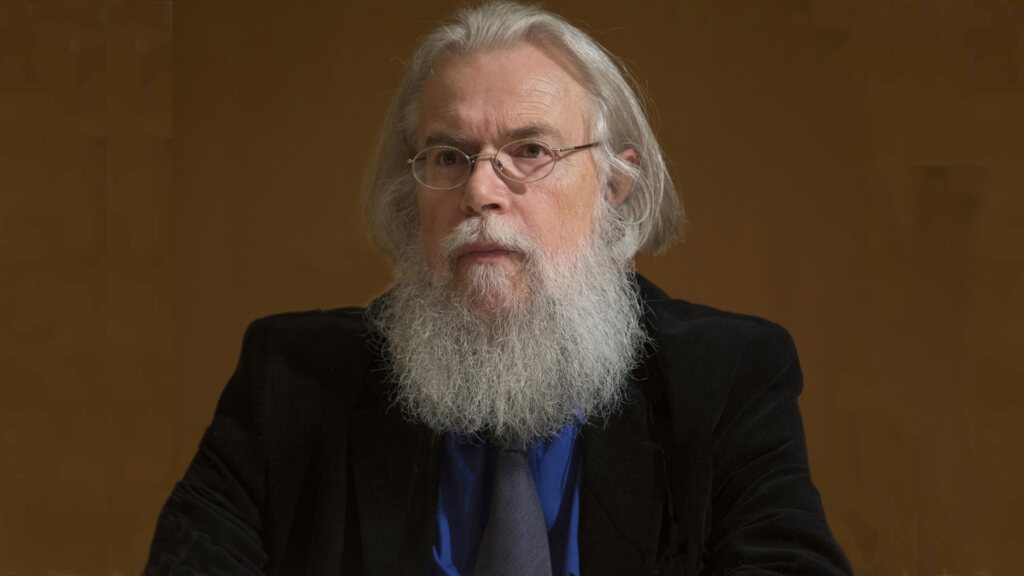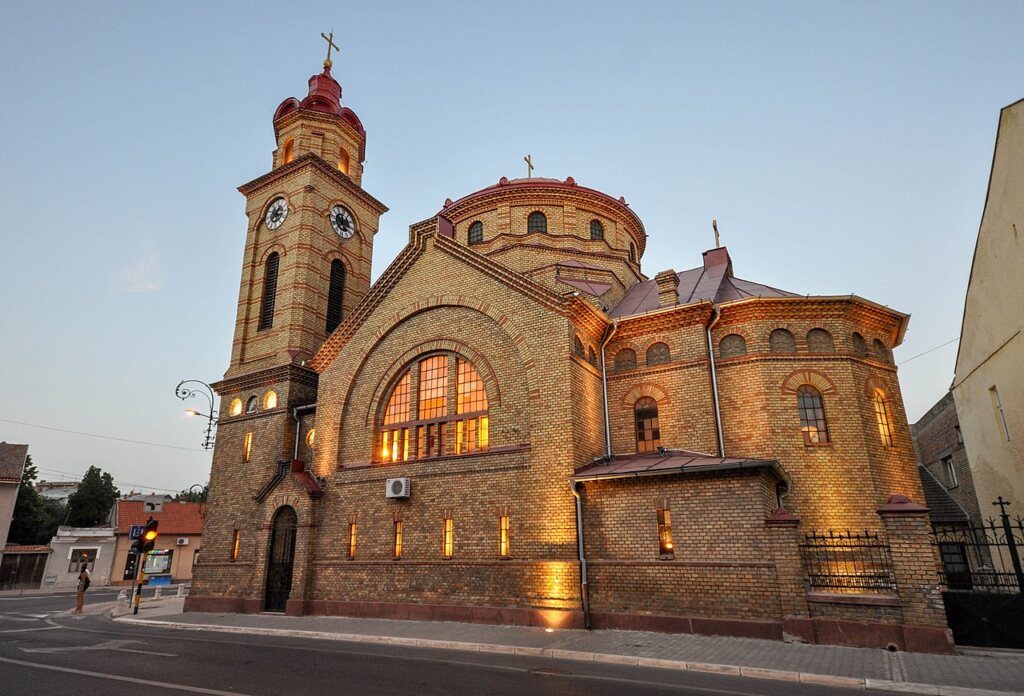We continue the monthly presentation of heavenly physicians while commemorating the Lord’s Resurrection. Ten saintly persons who exhibited humility while bearing their cross and triumphed over human frailties have been selected as saints to whom faithful turn for solace and healing when confronted with adversity.
St Matrona the Blind – May 2

Saint Matrona was born in 1881, being the last child of a family of faithful peasants. She was chosen by God before she was born. The numerous gifts received from God were commensurate with a particularly heavy cross, which she carried humbly and patiently throughout her life.
The Righteous Mother Matrona was not only blind but had no eyes at all. God instead gave her the gift of spiritual sight and healing, which manifested from childhood. Lines of people would form in front of her house, waiting to receive healing from their illnesses or answers to their problems.
At the age of 17, she was paralyzed for the rest of her life. She could no longer move, and later, she had to move from one place to another to escape the persecution of the communist regime.
Books and documentaries recount various healings and miracles. She was a quick intercessor with God during her life and is still after her death, and this is also reflected in her words—a spiritual testament: “Everyone, everyone who will come to me: tell me, as if I were alive, of your sorrows, and I will see you, and hear you, and help you.”
St Irodion of Lainici – May 3 
Saint Irodion was born in Bucharest in 1854 and entered monasticism at Cernica Monastery, where he was the spiritual son of Saint Calinicus. With Saint Callinicus’s ordination as bishop of Râmnic, several monks from Cernica Monastery, including Saint Irodion, went to Oltenia to revive the monastic life.
Saint Irodion was appointed abbot of Lainici Skete and remained in this obedience for 41 years, the longest-serving abbot of the monastic settlement.
He was a miracle worker in his lifetime. God endowed him with the gift of casting out unclean spirits and healing diseases of the soul and body.
After his repose in the Lord in 1900, people from all over Romania came to his tomb in Oltenia for healing and intercession before the throne of the Holy Trinity.
St Ephraim the New of Nea Makri – May 5

Saint Ephraim the New is one of modern times’ most beloved and prompt saintly helpers. Although he lived in the 14th-15th centuries, his relics and life were wonderfully discovered by the nun Makaria Desipri from the Greek Annunciation Monastery in Nea Makri only in 1950.
After over 500 years in obscurity, Saint Ephraim emerged into the Church’s and the faithful’s lives when his intervention was most needed. His intercession with Christ is sought for the healing of diseases, particularly cancer and depression, ailments that afflict many in our modern era, thereby establishing a profound connection with the present.
The faithful go to his monastery in Nea Makri, where his entire relics are kept, or ask for his help in the many churches and monasteries where fragments of his relics are kept. One of the most frequented places in Romania is Bucharest’s Radu Vodă monastery. Also, over time, testimonies of healings mediated by the holy new martyr have been collected in numerous books.
Hieromartyr Therapon, Bishop of Cyprus – May 14
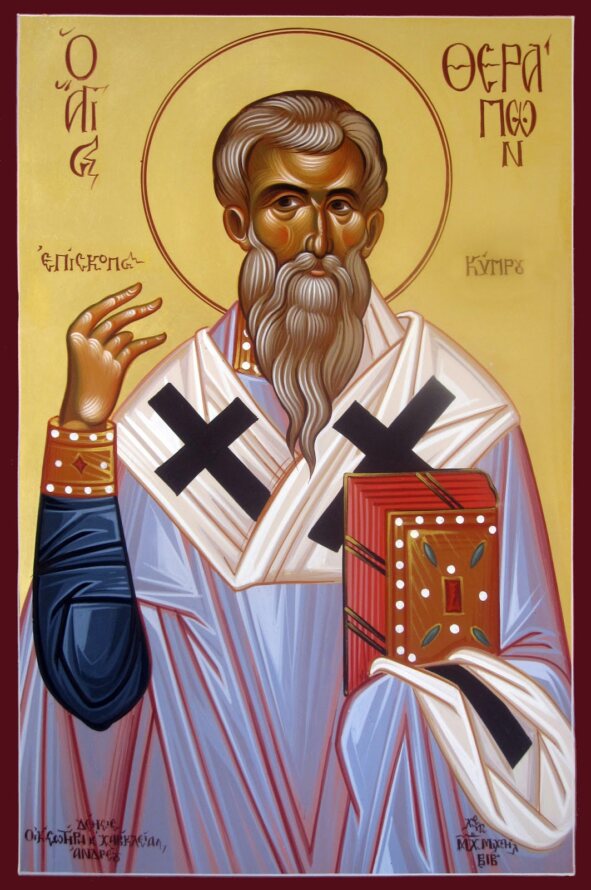
Saint Therapon is a great healer and miracle worker, especially known in the Greek-speaking Churches.
Among the few details about his life, it is mentioned that he served as a bishop in Cyprus in the 3rd-4th centuries, according to some sources.
Because he did not renounce Christ, the pagan leaders subjected him to torture, tying his body between four pillars, which, however, turned green and brought healing to some Christians present at his martyrdom.
His relics remained in Cyprus for a while, and in 806, they were moved to Constantinople due to the invasion of migratory peoples. During this journey, his holy body exuded myrrh, again bringing healing to those in need. The same miracle was repeated when his relics were translated to a church erected in his honour in Constantinople.
Among the diseases cured through his intercession are paralysis, cancer, bleeding, blindness or tuberculosis.
St. Therapon, meaning “healer” in Greek, was declared the spiritual patron of the Panhellenic Association of Physiotherapists by the Holy Synod of the Orthodox Church of Greece.
Sts Silas, Paisios and Nathan from Sihăstria Putnei Monastery – May 16
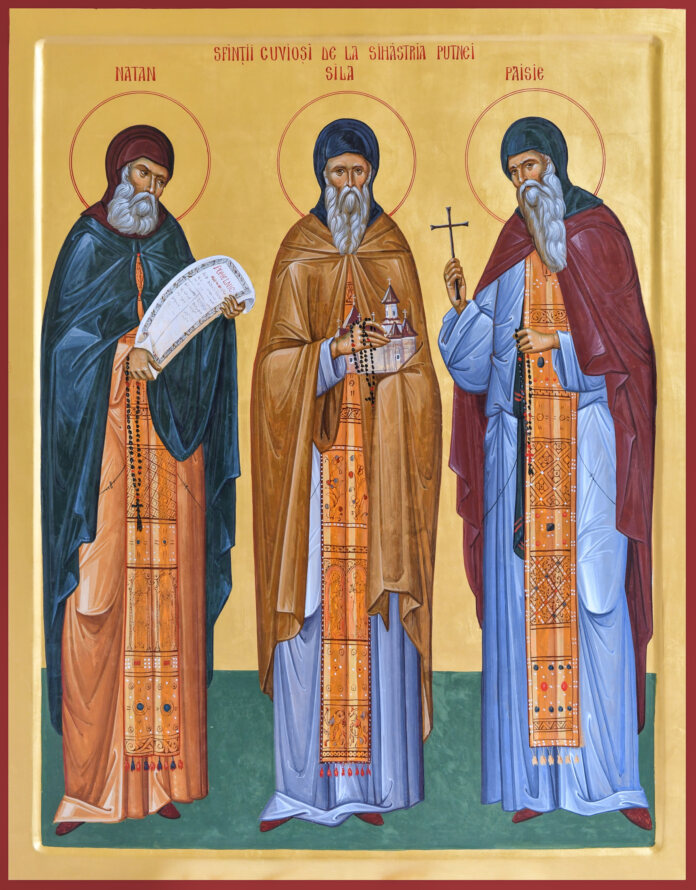
During the 18th century, all three saints resided in the Sihastria Putnei, also known as the hermitage of Putna. All three individuals made distinct contributions to the evolution of monastic existence and were also confronted with the challenges imposed by the Habsburg Empire’s annexation of Bukovina, which ultimately resulted in the dissolution of the monastic order.
In the autumn of 1753, Hieroschimamonk Silas was bestowed with the esteemed title of abbot of the hermitage by Metropolitan Saint Jacob of Putna. His rule was one of the most prosperous in spiritual and administrative matters.
Following a 27-year tenure as a community leader, the venerable Silas designated Nathan, a hieromonk, as hegumen. Nathan was a Saint Jacob of Putna’s spiritual father and a monk at Putna. A marvellously formed bone cross adorns his cranium, serving as an emblem of God’s glorification.
The venerable Paisios is mentioned in the will of the bequeathed monastic objects to the abbot Nathan. Hieromonk Paisios, unlike the other two, did not attain the rank of abbot. However, legend has it that he was an exceptional man of prayer and spiritual father and received the gift of foresight from God.
The saints’ relics were unearthed in 1990, over two centuries after their repose in the Lord, when a Putna monk observed a supernatural light emanating from the former hermitage.
The bones of the three venerable fathers were discovered in the old church’s vestibule shortly after the hermitage restoration commenced. The bones were wax-yellow in colour and emanated a pleasant aroma.
From this moment, numerous healings followed at the reliquary with their relics. Along with the rebirth of monastic life in this old hearth, the Holy Synod of the Romanian Orthodox Church decided the passage among the saints of Venerable fathers Silas, Paisios and Nathan from Sihastria Putnei, with a feast day on May 16.
Unmercenary Physician Thallelaios – May 20
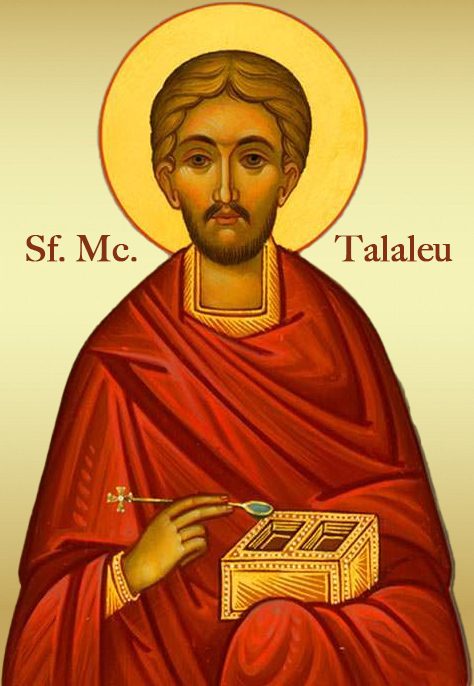
Saint Thallelaios, originally from Lebanon, lived in the 3rd century. He studied medicine and was known for treating the sick without accepting payment.
That is why the Church counts him among the unmercenary physicians and calls for his intercession during the Sacrament of Holy Unction and the blessing of water (agiasmos).
Saint Thallelaios arrived in Edessa, in present-day Turkey, and continued to heal the afflicted.
But there, he fell into the hands of the soldiers of Emperor Numerian, who was persecuting Christians. The saint confessed his faith in Christ and endured many torments, receiving the crown of martyrdom.
Saint Thallelaios is highly esteemed on the Greek island of Naxos, where a village bears his name. Saint Nicodemus the Aghiorite, a native of Naxos, composed a service to Saint Thallelaios, referring to him as the ‘protector of the island’. This service also recounts numerous miracles, instilling hope and faith in those who seek his intercession.
St Simeon Stylites of the Admirable Mountain – May 24
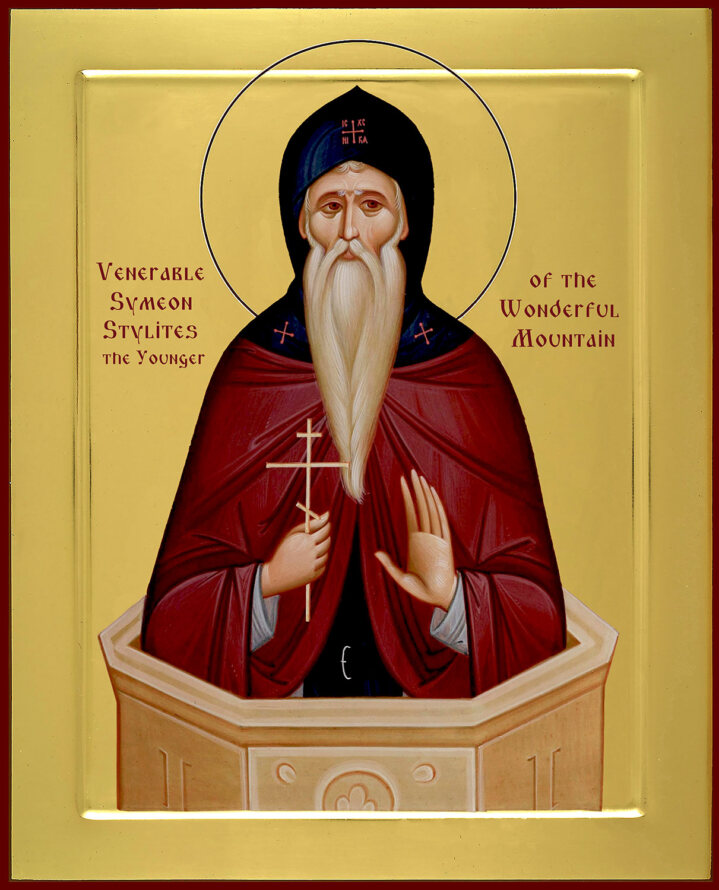
Saint Simeon was born in Antioch in the 6th century into a pious family. His mother, Martha, was also canonized (July 4).
He followed the monastic life as a child, assuming the feat of his spiritual father, being a stylite or living on a pillar.
Due to his very harsh ascetic life, through his prayers, he healed the blind and the lepers, drove away demons and raised the dead.
He founded a monastery on the Admirable Mountain, and the people he healed built the church in gratitude for the help received.
Saint Simeon is also present in Romania through his honourable skull, kept at Neamț Monastery. In 1463, St. Stephen the Great decorated the holy relics with a beautiful crown, preserved to this day.
St John the Russian – May 27
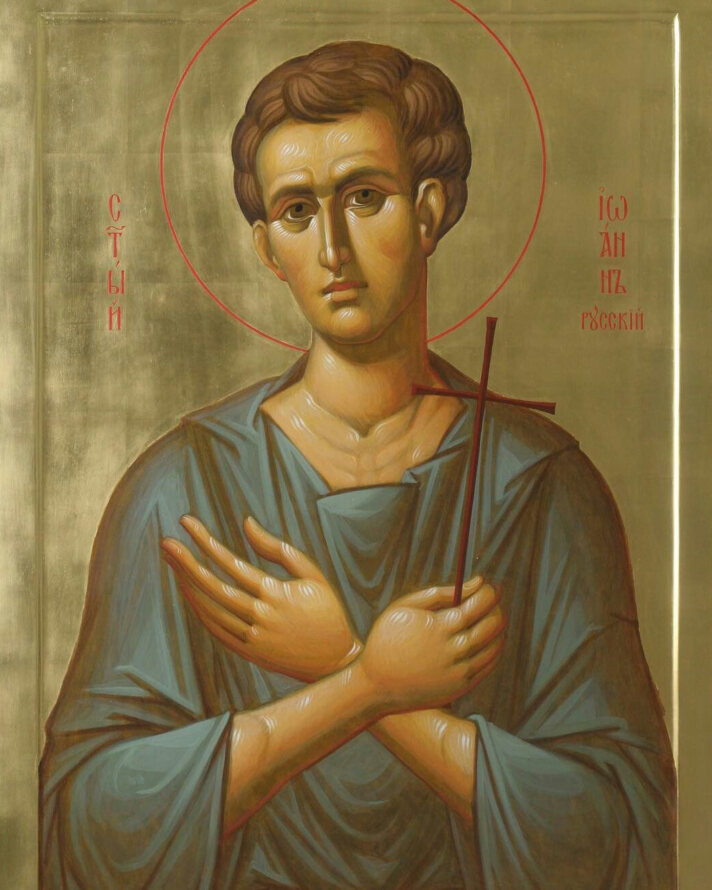
Saint John the Russian joins Saints Ephraim the New and Nectarios of Aegina among those ordained by God to be good friends to modern-time Christians.
Saint John was taken prisoner during a war by a Turkish military commander and taken as an enslaved person to a city in Asia Minor. The young Christian soldier did not deny Christ despite the threats and scorn of those around him. He led a humble life, where he was assigned to work in the cattle shed. The nights spent there were graced with his prayers and vigils.
In time, his master’s heart softened, and he grew fond of him. He realized that because of his servant’s holy life, his household flourished.
Saint John reposed in the Lord as a young man, and his relics ended up on the island of Evvia in Greece following the conflict of 1922, when Asia Minor came under Turkish rule, and the Greeks were forced to leave.
St. John’s interventions were quick in various situations: He healed children who could not speak, hunchbacked women who left their staff at his reliquary as a testimony, a priest who suffered from bleeding and could not celebrate the Liturgy, and numerous other miracles recorded in books.
Follow us on Twitter: @BasilicaNews




